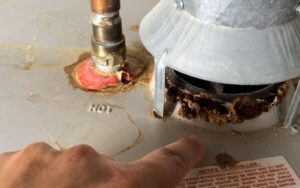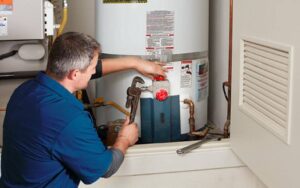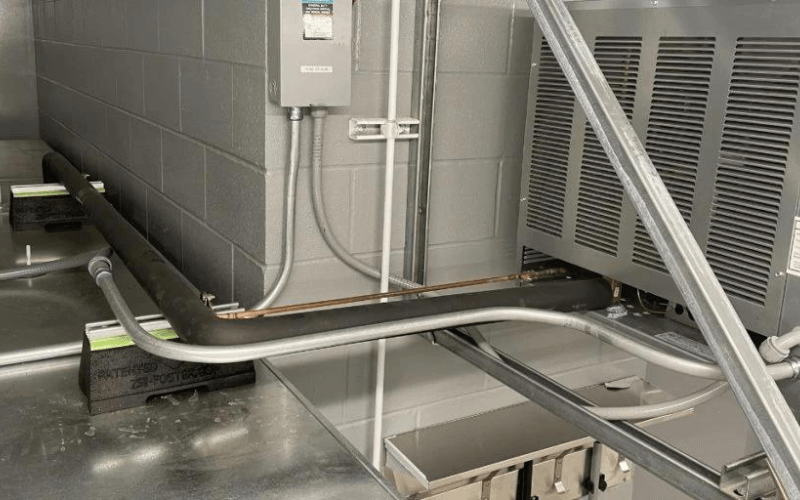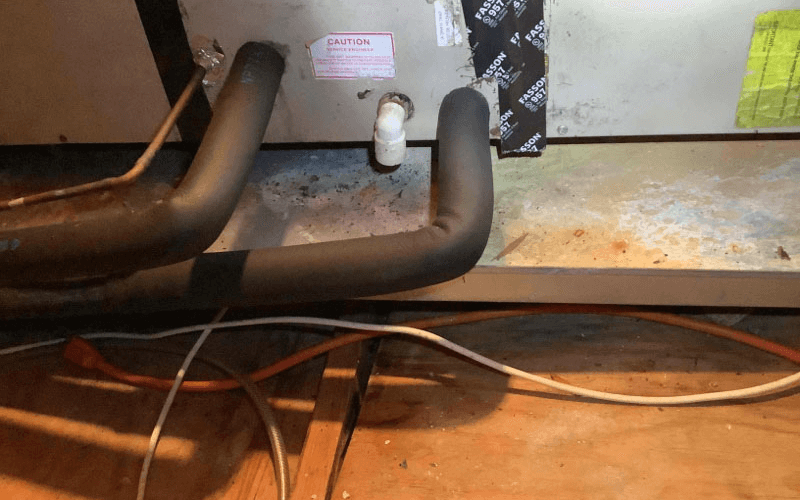When heated, water expands and creates pressure. Because of this pressure, the water in the tank is drained into the original source of water supply. This form of backflow is inappropriate in modern plumbing systems. A check valve keeps sewage from backing up and contaminating the water supply.
Table of Contents
ToggleYou’ve been checking tankless water heating solutions since learning about the benefits of converting from a tank to a tankless system. You may be wondering whether a tankless water heater requires an expansion tank. Do you know why a water heater expansion tank is necessary? If not, read on to find out why.
Do Tankless Heaters Require Expansion Tank?
No. Tankless water heaters are not required to have expansion tanks. Thermal expansion tanks are only necessary for systems that store large amounts of water because the water expands and needs a way to discharge excess pressure.
Tankless water heaters can only heat water for faucets, showers, and other purposes.
Depending on your needs, tank water heating systems range in size from 36 to 60 gallons. These tanks cycle on and off continually while holding water to keep the water in the heater hot and ready to use.
The regular power cycling of the water heater’s storage tank warms the water, causing it to expand. Because water heating tanks are pre-sized, any excess volume must be disposed of to avoid leaks or valve failure in your water heater and other home appliances. The expansion tank of a water heater serves as a pressure release valve for the main water tank.
Tankless water heaters do not require expansion tanks because they do not have a water storage tank and only heat water as needed.
Also, Read: How Many Amps Does A Tankless Water Heater Use?
How Do I Determine Whether My Hot Water Heater Requires an Expansion Tank?
Although building requirements did not previously require expansion tanks, most homes now have a check valve on their main water supply line. You may not need an expansion tank if your plumbing is designed to avoid pressure buildup.
If, on the other hand, your water heater’s relief valve is leaking or your plumbing fittings’ washers need to be replaced more frequently than usual, an expansion tank can save you money and trouble in the long run. Preventive measures are better than paying for costly repairs afterwards.
How Do Expansion Tanks In Water Heaters Work?
Backflow prevention devices, also known as check valves, are frequently installed at your home’s cold water intake from the municipal water supply. Water pressure is increased when hot water is converted to gas. Because of the rising water level, a house must be built. The expansion tank of the water heater is turned on here.
A rubber barrier separates the two halves of the Thermal Expansion tank. The water heater’s expansion tank is filled with compressed air. The hot water is extended on top. As the water cools, the air pressure at the bottom of the tank pushes the baffle back up, equalising the pressure.
Also, Read: How To Drain The Tankless Water Heater?
What Happens If A Hot Water Heater Expansion Tank Isn’t Installed?
Each homeowner is responsible for constructing an expansion tank for their water heater. You must fully understand your water heater’s status before selecting it. Think of it as a pressure cooker. Even if most of us have never used one, we have all heard of or seen them used by our parents or grandparents.
As the contents of a cooker heat up, the pressure rises. It can only escape far enough to accomplish its work without producing an explosion through the little gauge on top of the cooker. If this type of pressure builds up inside your water heater, it will be stuck unless a valve prevents the extra pressure from pushing some water out of the way to make room.
Because it has nowhere to go, it increases wear and tear and the likelihood of breakdowns on the surrounding equipment. Like a pressure cooker, your water heater has a pressure relief valve. If the pressure in the water heater reaches a critical level, this Pressure Relief Valve will release part of the pressure.
On the other hand, water pressure applied to your water heater’s inflexible tank could cause considerable harm. It will deteriorate with time, necessitating repair or replacement.
How Much Space Does a Water Heater Expansion Tank Require?
This addition to your water heater is essentially an empty chamber that allows expanding water to depart, taking up very little space. The excess water will enter an insulated pipe leading to an expansion tank, which must be large enough to hold the excess water as it rushes toward the water heater’s top.
Your expansion tank is likely bigger than a propane cylinder linked to your backyard grill. It has been insulated to keep hot water out. When the pressure declines, any water that accumulates during the pressure spike will be routed to the water heater. Most expansion tanks are installed atop the existing water heater, requiring no additional floor space.
How Much Does a Hot Water Heater Expansion Tank Cost?
An expansion tank costs between $100 and $400, depending on the type of water heater and the modifications required to accommodate the additional tank. This cost may be small if you live in a location with high water pressure.
How to Maintain the Expansion Tank on Your Water Heater
Compressed air at the bottom of an expansion tank may progressively lose pressure over time. It has a Schrader valve, similar to those found in bicycle tyres.
Check it yearly with a gauge to verify it has enough charge. Pressurise the tyre with a bicycle pump if the pressure is less than 50 pounds per square inch.
Conclusion
Thermal expansion tanks are required for a closed water supply system for tank-style water heaters. A closed-loop system must contain check valves or a backflow preventer to prevent water from flowing back into the main water supply when water is heated and pressure rises. The expansion tank aids in pressure reduction.
A tankless heating system does not require an expansion tank. Systems that do not require storage tanks merely heat the water that is utilised, avoiding the requirement for a tank. The system is less prone to pressure building because the warm water supply is consumed.
FAQ
What is the function of a tankless water heater’s expansion tank?
It prevents pipes from freezing and bursting in cold weather. It is a crucial component of tankless water heaters in cold locations.
How large is the expansion tank in tankless water heaters?
Thermal expansion tanks are compact metal tanks with a 2.1 to 4.5 gallons capacity. The ZEP1 is designed for use with tankless and point-of-use water heaters up to 2 gallons in capacity. The temperature in this tank is set at 140 degrees Fahrenheit.





















